Contents
If you live in a climate warm enough to ripen apricots, then you know that in the harvest year there is usually nowhere to go from the abundance of fruits. Such years do not always happen, so if the apricot season has already turned out, then it is necessary to use all the fruits so that none of them is lost. And if you have already dried enough dried apricots, prepared compotes, jam, jam and marshmallow, and there are still apricots left, then you can consider the option of making chacha from apricots. In Georgia, this drink is so traditional that, perhaps, in every house you can find a supply of chacha for a year from a variety of fruits. And from apricots one of the most aromatic drinks is obtained. Especially if you follow the traditional way of making it.
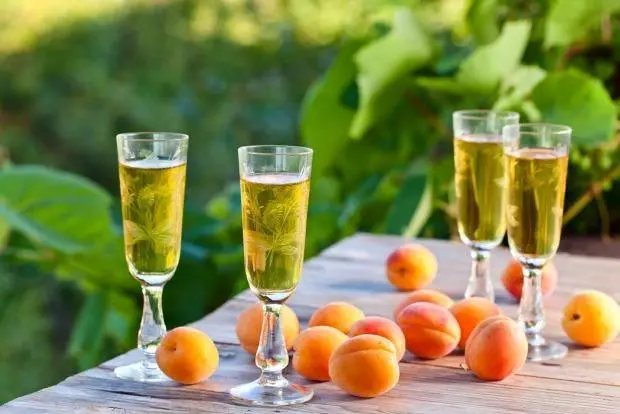
The article will consider several recipes for making apricot chacha at home. Which one you choose will depend on your goals and specific conditions.
Selection and preparation of raw materials
Interestingly, absolutely any variety of apricots and even the so-called wild apricot can be used to make chacha. It is only necessary to take into account that if in cultivated varieties of apricots the sugar content can be up to 16-18%, then in the game it is less – about 8-10%. Therefore, if you are going to use an exclusively traditional recipe for making chacha without adding sugar, then it is best to use the sweetest varieties of apricots for it.
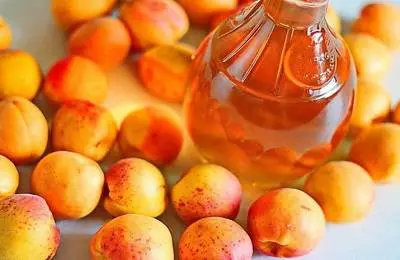
The fruits must meet two conditions:
- To be fully mature;
- They should be free of rot and mold.
Otherwise, the quality of apricots can be anything – they can be small, ugly, overripe, dented, including wind-blown to the ground.
Apricots do not need to be washed before use. On them, in the form of a natural coating, there are so-called wild, natural yeasts, which will play a major role in the fermentation process. However, if for speed you want to use additional artificial yeast, then you can wash the fruits – this will no longer be significant.
Apricots must be pitted, otherwise unintended bitterness may appear in the finished drink.
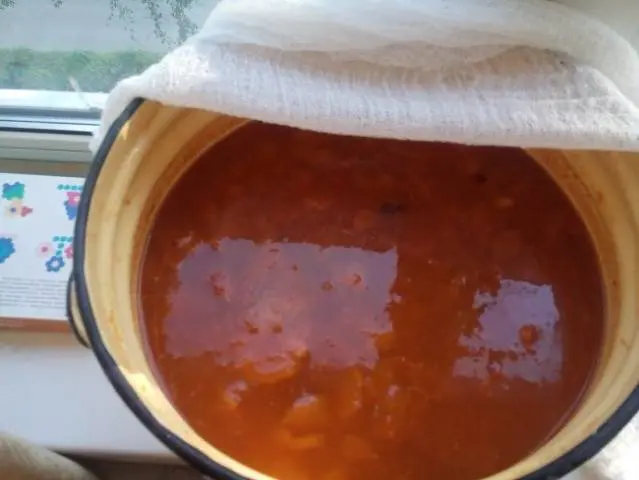
Then the apricots are transferred to a separate container and kneaded with hands or a wooden crush. You can, of course, use a mixer or blender, but the quality of any fruit will not improve from contact with metal. At this preliminary stage of preparation of apricots is completed.
Tradition defines quality
According to the traditional recipe, no sugar or yeast is added during the preparation of apricot chacha.
All you need is the apricots themselves and water. The recipe is as follows: for 4 parts of mashed apricots, take 3-4 parts of water by weight. As a result, you will get a soft drink with an amazing aroma and refined taste. But in order to avoid disappointment, you must immediately realize that the amount of chacha obtained only from apricots will be very small, but the quality of the drink will exceed all your expectations – you can get real German schnapps.
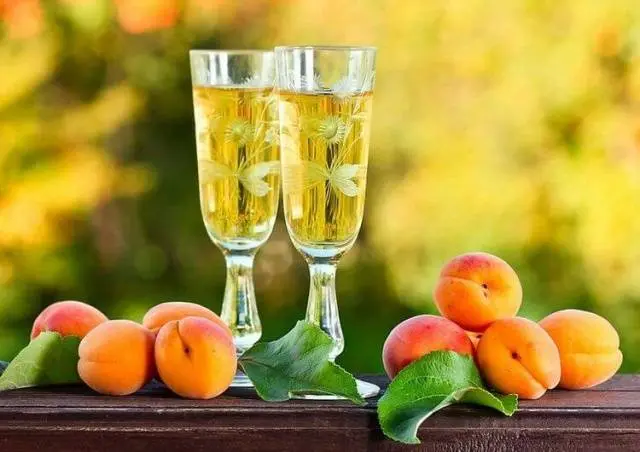
But you will not have any additional costs for sugar and yeast, which also matters.
Place the apricots mashed to a puree in the prepared container for fermentation, fill them with water and place in a warm place. Traditionally, the container was covered with a towel and set to ferment in the sun, leaving it outside even at night, if the nights are not cold (not below +18). But to be sure in the process, you can also put it in a dark, warm place in the room.
After 12-18 hours, after the appearance of signs of fermentation (hissing, foam), a water seal is placed on the container with apricots or a rubber glove with a hole is put on. It serves as an indicator of both the beginning and the end of the fermentation process. On wild natural yeast, apricot mash can ferment from 25 to 40 days. A deflated glove will signal the end of the process. The mash itself should brighten, sediment will fall to the bottom, and the taste will become slightly bitter without the slightest hint of sweetness.

These signs mean that the mash is ready for distillation. To do this, it is usually filtered through cheesecloth into an alembic.
For distillation, you can use an apparatus of any design, both ready-made and home-made. The main thing in this recipe is the fact that moonshine is distilled very slowly. Therefore, the fire is made minimal, the liquid should drip slowly.
As soon as the fortress falls below 30 degrees, the first distillation must be stopped. Now measure the strength of the liquid collected at this stage and determine the amount of absolute alcohol in percent. To do this, multiply the entire volume obtained by the strength and divide by 100. Then dilute the resulting distillate with water so that the total strength drops to 20%.
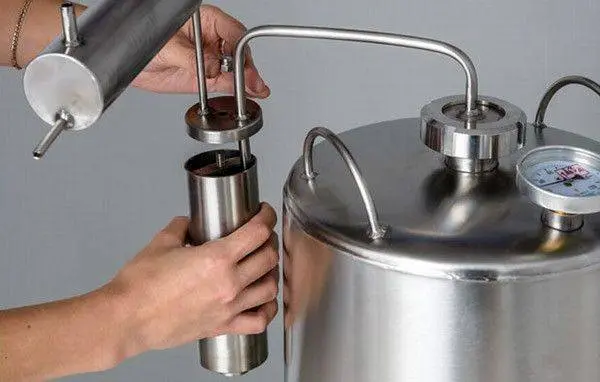
Distill the liquid a second time until the fortress drops below 45 degrees. It is believed that real chacha should have a strength of about 50 degrees. If you want to get exactly this, then finish the distillation even earlier. Well, to get the usual 40-degree drink, it can be diluted with water to the desired strength.
Recipes with sugar and yeast
If you can’t bear the thought of how little chacha comes from so many apricots, or if you can only use wild apricots, then try the recipe with added sugar.
In this case, for 10 kg of crushed apricots, take 20 liters of water and 3 kg of sugar. From this amount of ingredients, you can get about 4,5 liters of apricot chacha. Although, of course, its taste and aroma will already be different, but if you don’t have truly sweet apricots on hand, then there is no other way out.
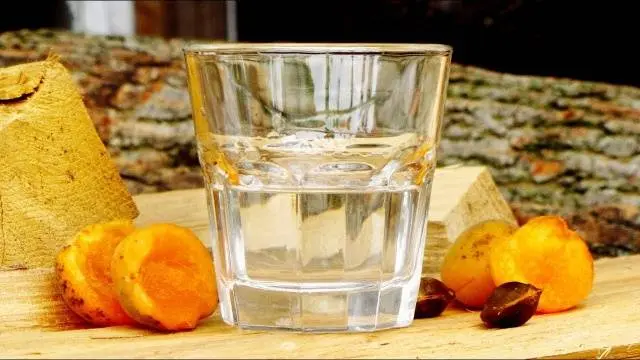
Otherwise, your further actions in this case will be completely similar to the above procedure. And in a month and a half you will be able to get fragrant apricot chacha.
If time also matters to you, and you want to get a ready-made drink in the shortest possible time, then you will need to use ready-made yeast for making chacha: bakery or wine – it does not really matter.
For this recipe, the ingredients will be something like this:
- 10 kg of pitted apricots;
- 3 kg of sugar;
- 20 liters of water;
- 100 grams of fresh or 20 grams of dry yeast.
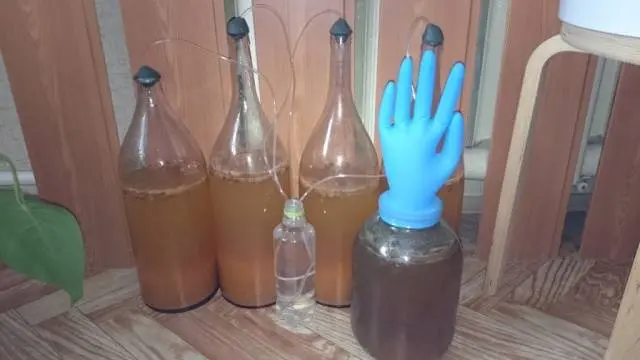
All components are mixed in a fermentation tank, in which about 30% of free space must be left for the release of foam and gases. Yeast is added last. For quick action, it is advisable to first dilute them in a small amount of warm water. Fermentation with the addition of yeast should be completed much faster – within 10 days from the start of the process. After that, the whole distillation process is repeated with the only difference that the speed of distillation no longer matters – you can even make a big fire, this can no longer affect the quality of the finished chacha.
Try to make apricot chacha in several ways and decide for yourself whether it makes sense to chase quantity or whether quality is more important.









